Each year, around 1.3 billion tonnes of food is wasted, which has significant impact on the environment. All of this food that goes uneaten contributes to a staggering 3.3 billion tonnes of greenhouse gases. On a note closer to home, food waste is also bad for your budget, as more money goes to buying new food when old food could have been saved.
There are plenty of ways to combat food waste, but one key way that is often over looked is the ways you use your fridge.
Ah, yes — the quiet, unsuspecting fridge (or not so quiet, if you have one like mine). It seems pretty straight-forward to use: put stuff that needs to be cold in, make it last for longer.
But if you take just a few extra seconds to consider where you’re putting things in the fridge, you can use it so much more effectively, and keep your food for way longer than before. It doesn’t cost anything extra, and once you know what to do, doesn’t take any more time or effort than the way you normally stock your fridge. So why not give it a try?
Here are 7 smarter ways to use your fridge:
1. Know which parts are coldest and warmest

Gif courtesy of giphy.com
The coldest part of the fridge is the bottom of the fridge, and the warmest part is the door. This fits in with the general rule: coldest at the bottom and the back, warmer at the top and near the front.
If you keep this in mind, knowing where to stack things becomes a whole lot easier. For example, it seems tempting to put your milk in the door – the cartons fit so well into the door shelves, it’s like they’re made to be there! But don’t do it – milk needs to be kept as cold as possible, so if you can try and put it as far back and low down in the fridge as you can. The same goes for eggs.
Conversely, condiments are ‘generally high in vinegar and salt, which are natural preservatives’ – so feel free to put all your ketchup, mustard, and salad dressing in the door.
2. General rule: stack hot to cold
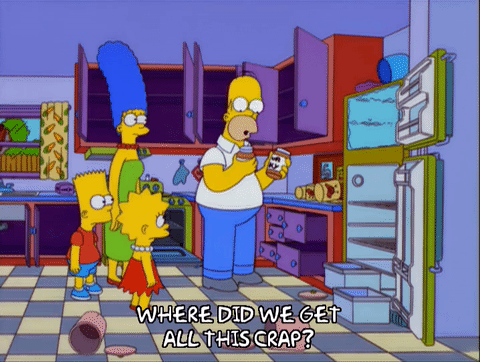
Gif courtesy of giphy.com
This is related to the first point, but is important enough to stress again – stack your food from those that need less cold to most cold. This is what professional chefs do to make sure that cross-contamination doesn’t occur – because if things from higher shelves drip to the lower ones, the foods on the lower shelves will need to be cooked longer anyway.
If you do this, your fridge break-down should be a little something like this:
- No-cook foods at the top (e.g. leftovers, dips, yogurt)
- Vegetables and fruit in the drawers (these are normally set to a different humidity designed for fruits and veggies)
- Raw meat at the bottom
3. Don’t put leftovers in your fridge straightaway
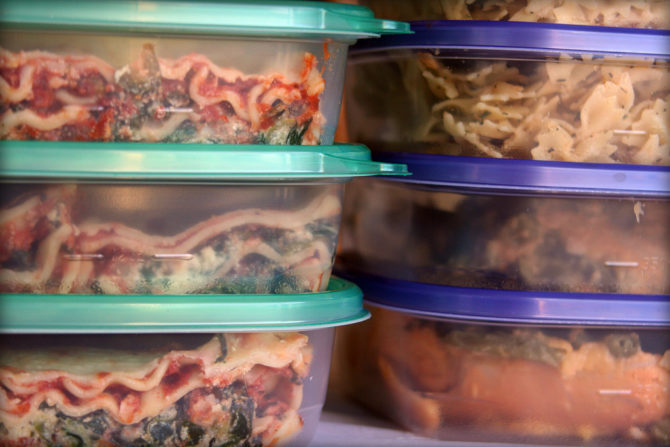
Photo courtesy of Kathleen Franklin on Flickr
If you’re in a clearing-up flow, it’s tempting to put your leftovers into a container and put them in the fridge straightaway. But if you put them in while they’re still hot, this will raise the overall temperature of the fridge, which isn’t great. While you don’t want to leave your leftovers chilling on the counter-top overnight, leaving them out for a short while to cool is a good way to help your fridge do its job best.
4. Know what you can keep outside
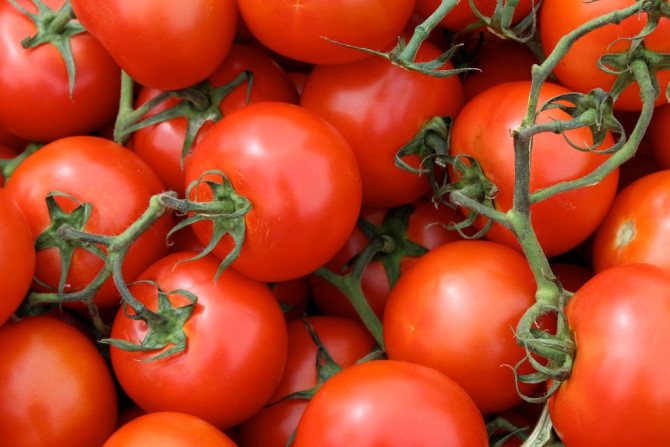
Photo courtesy of Tony on Flickr
There are some foods that seem like they’d belong in the fridge, but in reality they don’t. So save your fridge space and spare your fridge the extra effort by keeping out your tomatoes, bread, potatoes and onions. This will improve the taste of the ingredients too (tomatoes will be more flavourful and potatoes less starchy, for example).
5. Don’t forget about your freezer
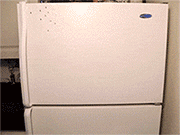
Gif courtesy of giphy.com
Some things may not need to go in the fridge, but they could go in the freezer. This will again free up storage space, especially as you can pack your freezer a fair amount while you don’t want to do this with your fridge (more on that in the next point).
For example, you shouldn’t store bread in the fridge – that’ll make it dry out – but you can definitely keep it in the freezer. The same goes for big batches of leftovers, pasta sauces, soups, and meats you aren’t going to get through straight away.
6. Don’t over-stuff your fridge
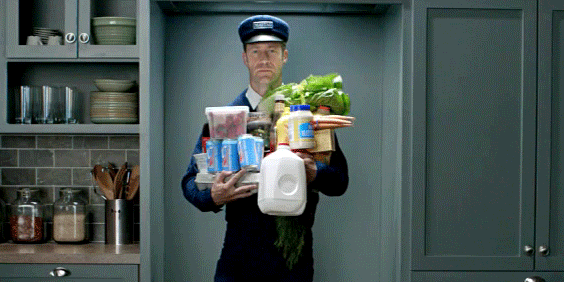
Gif courtesy of giphy.com
If you can, try not to cram too much into your fridge. This is because ‘cold air needs to flow‘ through the fridge, and to do that there needs to be adequate space. If you don’t leave enough space, you could get small ‘pockets of heat and warmth‘, leaving your fridge’s overall temperature inconsistent.
7. Don’t stack on top of the fridge
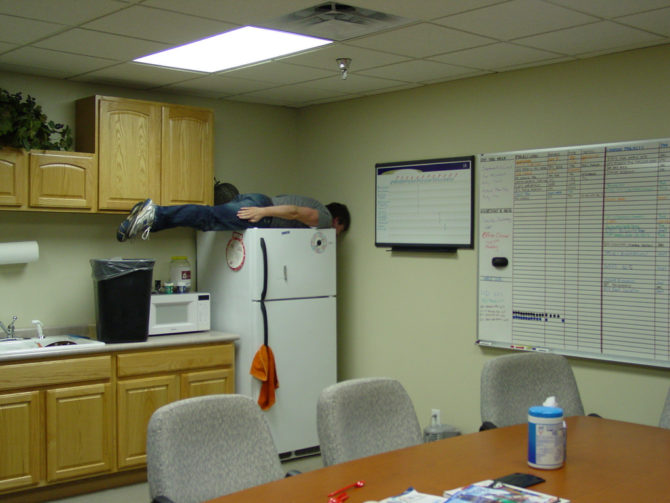
Photo courtesy of Andrew Meyer on Flickr
This bit isn’t even in the fridge, but it’s worth a mention since it definitely still involves the fridge, and is something a lot of us do without thinking about.
If you can, try to avoid stacking things on the top of your fridge – this is near where the warm air is pumped out, and will rise to not long after. If you go stacking bread or other perishables up there, they’ll be green and fuzzy before too long. It’ll spoil your wine too.
If your kitchen is rather small and you really must use the space (which is perfectly understandable, to be honest), stack non-food items on the top of your fridge so that the heat won’t effect them (e.g. cook books, paper towels, mixing bowls etc.).


